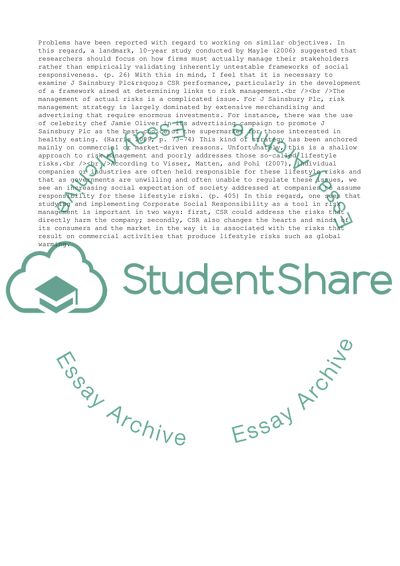Cite this document
(Corporate Social Responsibility as Tool For Risk Management: J Case Study, n.d.)
Corporate Social Responsibility as Tool For Risk Management: J Case Study. https://studentshare.org/management/1735958-corporate-social-responsibility-as-tool-for-risk-management-j-sainsbury-plc-case-study
Corporate Social Responsibility as Tool For Risk Management: J Case Study. https://studentshare.org/management/1735958-corporate-social-responsibility-as-tool-for-risk-management-j-sainsbury-plc-case-study
(Corporate Social Responsibility As Tool For Risk Management: J Case Study)
Corporate Social Responsibility As Tool For Risk Management: J Case Study. https://studentshare.org/management/1735958-corporate-social-responsibility-as-tool-for-risk-management-j-sainsbury-plc-case-study.
Corporate Social Responsibility As Tool For Risk Management: J Case Study. https://studentshare.org/management/1735958-corporate-social-responsibility-as-tool-for-risk-management-j-sainsbury-plc-case-study.
“Corporate Social Responsibility As Tool For Risk Management: J Case Study”. https://studentshare.org/management/1735958-corporate-social-responsibility-as-tool-for-risk-management-j-sainsbury-plc-case-study.


